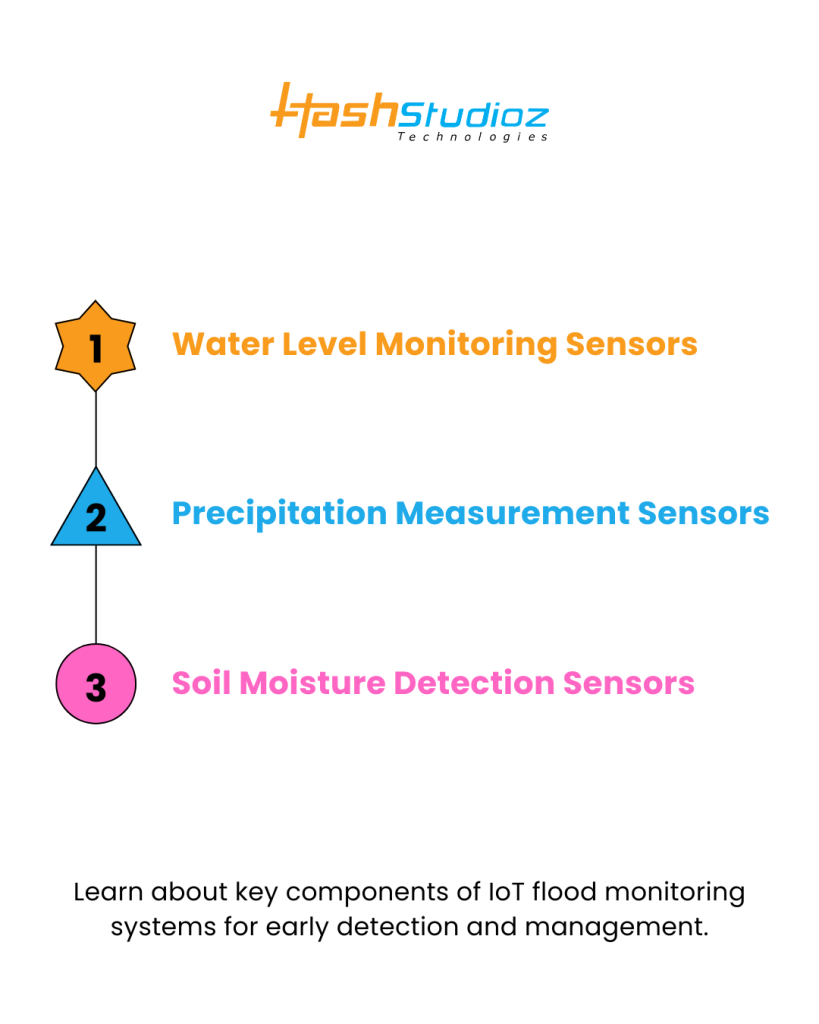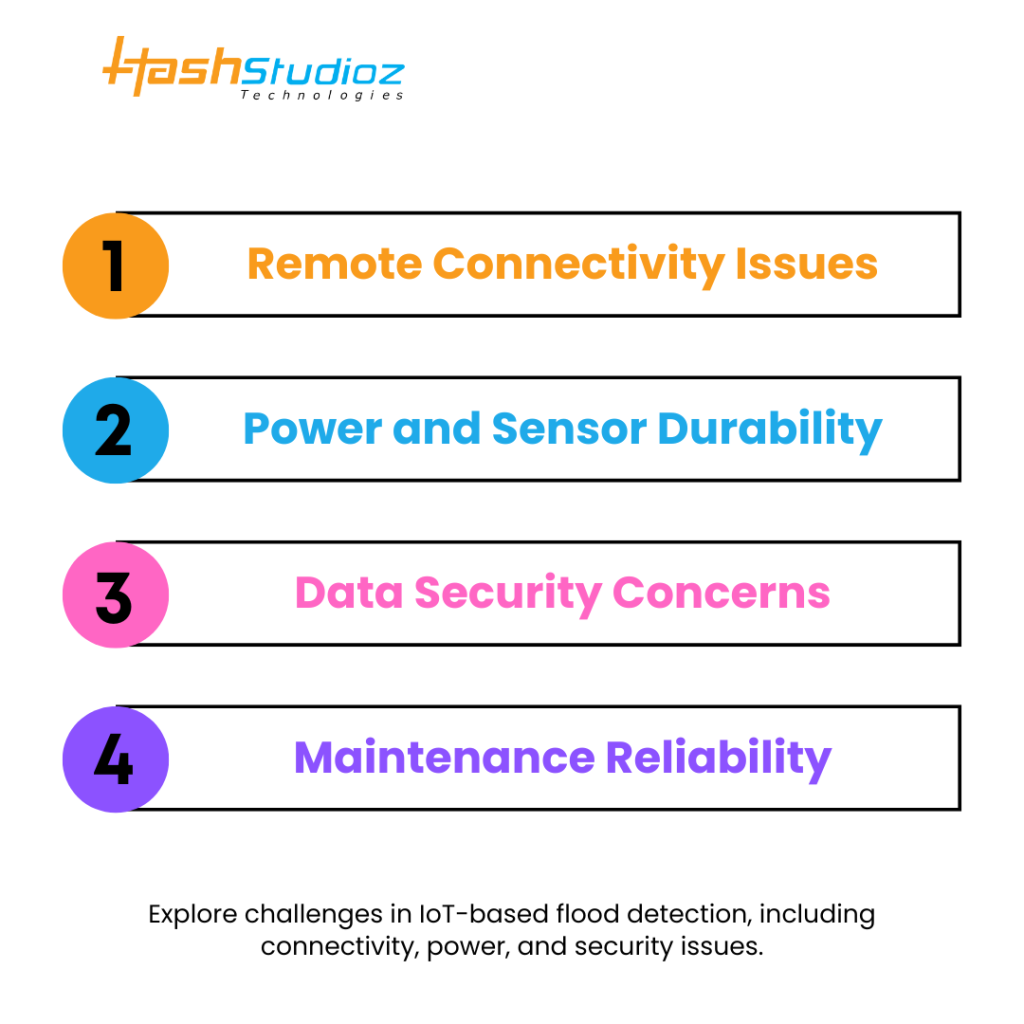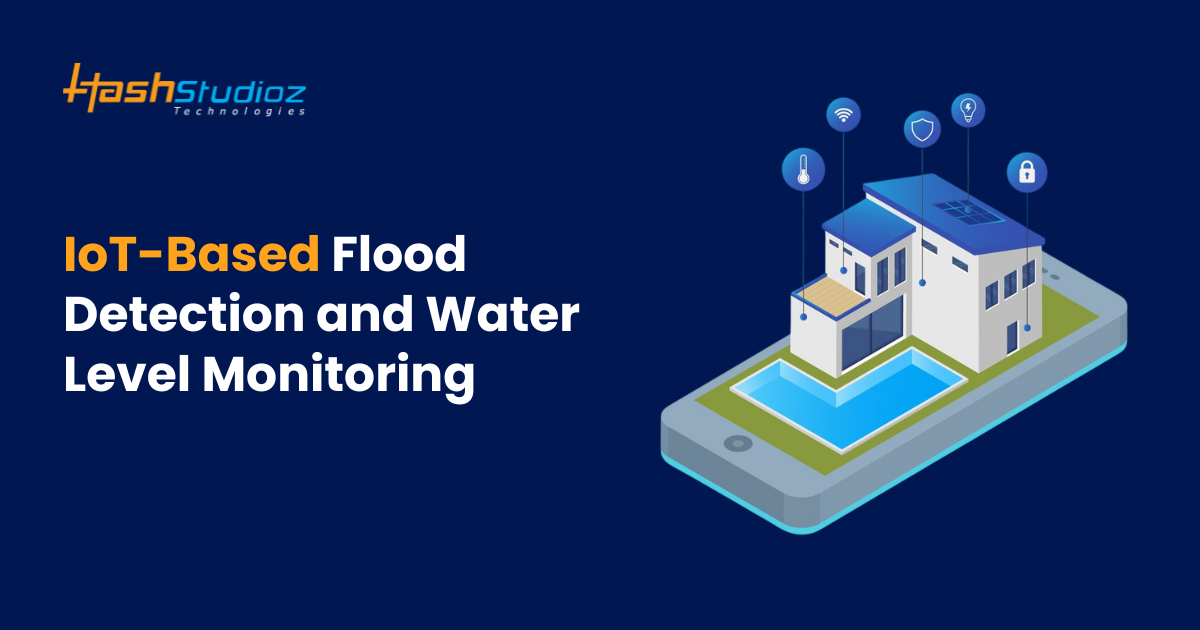Flooding is one of the most devastating natural disasters worldwide, causing immense damage to life, property, and infrastructure. As climate change accelerates the frequency and intensity of storms, more communities face the challenge of flood preparedness. Traditional flood detection systems, while effective in some cases, often struggle with issues like delayed response times, high costs, and inadequate coverage in remote areas. IoT-based flood detection and water level monitoring systems have emerged as a transformative solution, offering real-time monitoring, cost-effectiveness, scalability, and predictive capabilities.
Table of Contents
- Importance of Flood Monitoring
- Global Flood Impact Statistics
- Need for Real-Time and Reliable Monitoring Systems
- Understanding IoT in Flood Detection
- Key Components of IoT Flood Monitoring Systems
- Advantages of Using IoT for Flood Monitoring
- Challenges in IoT-Based Flood Detection
- Real-World Applications and Case Studies
- Future Trends in IoT Flood Monitoring
- Smart Flood Monitoring Solutions by HashStudioz Technologies
- Why Choose HashStudioz Technologies for IoT-Based Flood Monitoring?
- Conclusion
- FAQs
Importance of Flood Monitoring
Flood monitoring is critical for several reasons. First, it enables early warning systems, which are essential for saving lives and mitigating property damage. Secondly, it helps governments and organizations make timely and informed decisions, such as initiating evacuations or closing flood-prone roads. Without reliable flood monitoring, it’s nearly impossible to anticipate the timing, severity, and scope of flooding events, making affected areas even more vulnerable.
The inability to predict such floods often results in devastating consequences. This is where Internet of Things based flood detection systems come in, enabling real-time and continuous monitoring.
Global Flood Impact Statistics
Floods have a significant global impact:
- Over 250 million people are affected by floods every year across the globe.
- Floods cause about 20% of the total economic losses due to natural disasters each year.
- In cities, flood-related damage is exacerbated due to dense populations, aging infrastructure, and poor urban planning.
The need for better flood monitoring systems is clear, particularly given the escalating risks brought on by climate change.
Need for Real-Time and Reliable Monitoring Systems
Traditional flood detection methods, such as manually reading gauges or relying on weather reports, can be slow, unreliable, and inefficient. In contrast, IoT-based flood detection systems offer a more responsive and continuous approach to flood monitoring. These systems gather real-time data on various environmental factors and use cloud-based analytics to provide timely alerts to stakeholders. This provides valuable lead time for decision-making, evacuation, and resource allocation.
Understanding IoT in Flood Detection
IoT refers to the network of interconnected devices, such as sensors and machines, that collect and exchange data. These devices are capable of communicating with each other over the internet, allowing data to be processed, analyzed, and acted upon automatically. In flood monitoring, IoT-based systems deploy sensors to measure various environmental factors like water levels, rainfall, and soil moisture. These sensors then send the collected data to cloud-based platforms for analysis, helping authorities track conditions in real-time.
Role of IoT in Environmental Monitoring
IoT has revolutionized environmental monitoring by providing a continuous flow of data. It allows for the integration of multiple sensors, such as water level, rainfall, and soil moisture sensors, into one unified system. These sensors can be installed in multiple locations, from riverbanks to urban drainage systems, giving authorities a comprehensive view of potential flood risks.
Overview of IoT-Based Flood Detection Systems
IoT-based flood detection systems use networks of sensors that continuously collect environmental data and transmit it to centralized data processing platforms. These systems can analyze the collected data and trigger automatic alerts when water levels or rainfall exceed predetermined thresholds. With these systems, flood-prone areas can be constantly monitored, and any signs of impending floods can be quickly detected.
Key Components of IoT Flood Monitoring Systems
Sensor Technologies
Several types of sensors are commonly used in IoT-based flood monitoring systems, including:

- Water Level Sensors: These sensors measure the height of water bodies (e.g., rivers, lakes) and alert when water levels approach dangerous thresholds.
- Rainfall Sensors: By measuring rainfall intensity, these sensors predict the possibility of flooding based on how much rain has fallen within a given period.
- Soil Moisture Sensors: These sensors monitor the moisture content in the soil, which is critical for understanding runoff potential and flash flooding risks.
Communication Protocols
For effective communication between sensors and central platforms, several IoT communication protocols are used:
- LoRaWAN: A low-power, long-range network protocol that works well in remote or rural areas where cellular networks may be unavailable.
- NB-IoT (Narrowband IoT): NB-IoT is designed for cellular networks and provides excellent coverage in both urban and rural environments, offering efficient data transmission even in areas with poor connectivity.
- Wi-Fi: Often used in urban environments where high-speed internet is readily available, Wi-Fi can provide real-time, high-volume data transmission.
Data Processing and Analytics Platforms
Once data is collected by the sensors, it is sent to cloud-based data processing platforms for analysis. These platforms utilize advanced algorithms to evaluate environmental conditions and forecast potential flood events. By processing data in real-time, IoT-based systems can provide predictive analytics, giving authorities an early warning to mitigate the impact of floods.
Alert and Notification Mechanisms
When the system detects a rise in water levels or excessive rainfall, it sends alerts to relevant stakeholders, including local authorities, emergency responders, and the public. Alerts are typically delivered through mobile apps, SMS, or email notifications, ensuring that the appropriate measures can be taken in a timely manner.
Advantages of Using IoT for Flood Monitoring
Real-Time Data Collection
One of the most significant advantages of IoT-based flood detection is the ability to collect and process real-time data. This allows for rapid detection of rising water levels, rainfall, or soil moisture, giving authorities the information needed to make quick decisions.
Cost-Effectiveness Compared to Traditional Systems
Traditional flood monitoring systems often require expensive infrastructure, regular maintenance, and manual labor for data collection. In contrast, IoT-based systems are typically more affordable to implement and maintain. Since these systems rely on sensors and automated data collection, they require fewer human resources and provide continuous monitoring without significant operational costs.
Scalability Across Geographies
IoT-based flood detection systems can be deployed on a large scale across various geographic areas. Whether in rural, urban, or remote locations, IoT networks can easily expand to cover new regions, offering a scalable solution for flood monitoring in diverse environments.
Predictive Analytics for Disaster Preparedness
By leveraging predictive analytics, IoT systems can anticipate floods before they happen. Using data collected from sensors, machine learning algorithms can predict flooding events based on historical weather patterns, current conditions, and environmental factors. This enables authorities to issue warnings and take preventive measures, ultimately reducing the impact of floods.
Challenges in IoT-Based Flood Detection

Connectivity Limitations in Remote Areas
While IoT technology offers significant benefits, connectivity remains a challenge, especially in remote or hard-to-reach locations. Reliable internet or network coverage is essential for transmitting data from sensors to central platforms. Areas without such infrastructure may face difficulties in deploying effective IoT-based systems.
Power Supply and Sensor Durability
For IoT systems to work continuously, they need a reliable power source, which can be difficult to maintain in areas prone to flooding or extreme weather. Ensuring the durability of sensors is also important to maintain system effectiveness over time, particularly in harsh environmental conditions.
Data Privacy and Cybersecurity Concerns
As IoT-based systems collect sensitive environmental data, ensuring data privacy and cybersecurity becomes crucial. Malicious attacks or data breaches could disrupt operations and lead to compromised system performance.
Maintenance and Operational Reliability
Regular maintenance is required to ensure the functionality of the sensors, communication infrastructure, and data platforms. The operational reliability of IoT systems is crucial for their success, and any malfunction or failure can significantly impact the flood detection process.
24 Game-Changing IoT Innovations Transforming Our Daily Lives
Real-World Applications and Case Studies
LiXiA Sensors in Townsville, Australia
In Townsville, Australia, the LiXiA sensors have been used in flood monitoring projects. These sensors provide an affordable and efficient solution for flood detection, offering real-time water level data. LiXiA’s technology has proven effective in ensuring timely flood warnings, especially for rural and remote communities.
Sandy Creek Monitoring Project by Draper Environmental
Draper Environmental has implemented an IoT-based flood monitoring system along Sandy Creek in the United States. This system uses sensors to measure rainfall, water levels, and other environmental conditions to provide real-time data for flood risk management.
LoRaWAN Implementation at Chorinsky-Klause Dam, Germany
In Germany, the Chorinsky-Klause Dam employs an IoT-based system utilizing LoRaWAN technology to monitor water levels and environmental conditions. This system allows for early flood alerts, ensuring prompt action when water levels rise.
Urban Drainage Monitoring in Jakarta, Indonesia
Jakarta has implemented IoT-based flood monitoring in its urban drainage systems. These systems collect real-time data on water levels, rainfall, and sewer conditions to help authorities manage flood risks more effectively.
Future Trends in IoT Flood Monitoring
Integration of AI and Machine Learning for Predictive Models
In the future, the integration of AI and machine learning models will enhance IoT flood detection systems by improving their predictive capabilities. By analyzing large datasets and recognizing patterns, these technologies can offer more accurate flood forecasts and early warning systems.
Use of Drones for Expanded Coverage and Data Collection
Drones equipped with sensors can offer expanded coverage in flood-prone areas, especially in difficult-to-reach places. They can be deployed rapidly to collect data, providing a broader scope for flood monitoring systems.
Community-Based Monitoring Through Citizen Science
Incorporating community-based monitoring efforts can provide additional data points and improve flood prediction accuracy. Citizen science initiatives can enable local communities to engage with flood monitoring, broadening the scope of data collection and enhancing overall system effectiveness.
Smart Flood Monitoring Solutions by HashStudioz Technologies
Floods can cause irreversible damage both to infrastructure and human lives. With changing climate patterns, the need for real-time, reliable, and predictive flood monitoring has never been more critical.
That’s where IoT-Based Flood Detection and Water Level Monitoring systems come in.
These systems use smart sensors, cloud platforms, and AI-based analytics to continuously monitor water levels, rainfall, and soil moisture. They provide instant alerts and actionable insights, enabling local authorities, municipalities, and industries to react faster and save lives.
Why Choose HashStudioz Technologies for IoT-Based Flood Monitoring?
HashStudioz Technologies is a trusted name in IoT and smart environment solutions. We specialize in designing and deploying robust, scalable, and customized IoT systems for disaster management.
Our Flood Monitoring Services Include:
- Custom IoT Hardware Design
Design and deployment of water level, rainfall, and soil moisture sensors tailored to specific use cases. - Wireless Communication Integration
Setup using LoRaWAN, NB-IoT, GSM, and other wireless protocols for real-time data transmission even in remote areas. - Cloud-Based Monitoring Dashboards
Real-time dashboards for live sensor data, historical analysis, and threshold-based alert systems. - AI & ML Analytics
Predictive flood risk modeling using historical and live data to enable proactive disaster planning. - Mobile and Web App Development
User-friendly interfaces for city officials, emergency teams, and citizens to receive alerts and monitor conditions. - 24/7 Technical Support and Maintenance
Dedicated team to ensure high uptime, quick sensor calibration, and troubleshooting.
Whether you’re a government body, disaster management team, utility provider, or NGO HashStudioz helps you implement IoT-Based flood and water level monitoring systems that save time, money, and lives. Contact Hashstudioz with our IoT experts and get started with a tailored solution for your region’s flood risk management.
Conclusion
IoT-based flood detection and water level monitoring systems offer significant improvements over traditional methods. With real-time data collection, cost-effectiveness, and predictive analytics, these systems enable faster, more accurate flood detection and response. Despite challenges related to connectivity, power supply, and cybersecurity, IoT continues to revolutionize how we approach flood management, offering hope for safer, more resilient communities worldwide.
FAQs
1. What is an IoT-based flood detection system?
It’s a system that uses connected sensors to monitor water levels, rainfall, and soil moisture. The data is sent in real time to platforms that analyze and detect flood risks.
2. How accurate are these systems?
They are highly accurate when installed and calibrated correctly. Continuous data monitoring ensures early detection of unusual water level changes.
3. Which communication methods are used?
These systems use LoRaWAN, NB-IoT, Wi-Fi, or GSM networks, depending on location and data needs. LoRaWAN is ideal for remote areas with low power.
4. What are the main benefits?
They offer real-time alerts, are cost-effective, scalable, and enable predictive analysis to prepare for flood events in advance.
5. Can they work in remote or offline areas?
Yes, many systems are built to store data locally and transmit it later or use long-range networks like LoRaWAN to operate without strong internet access.

